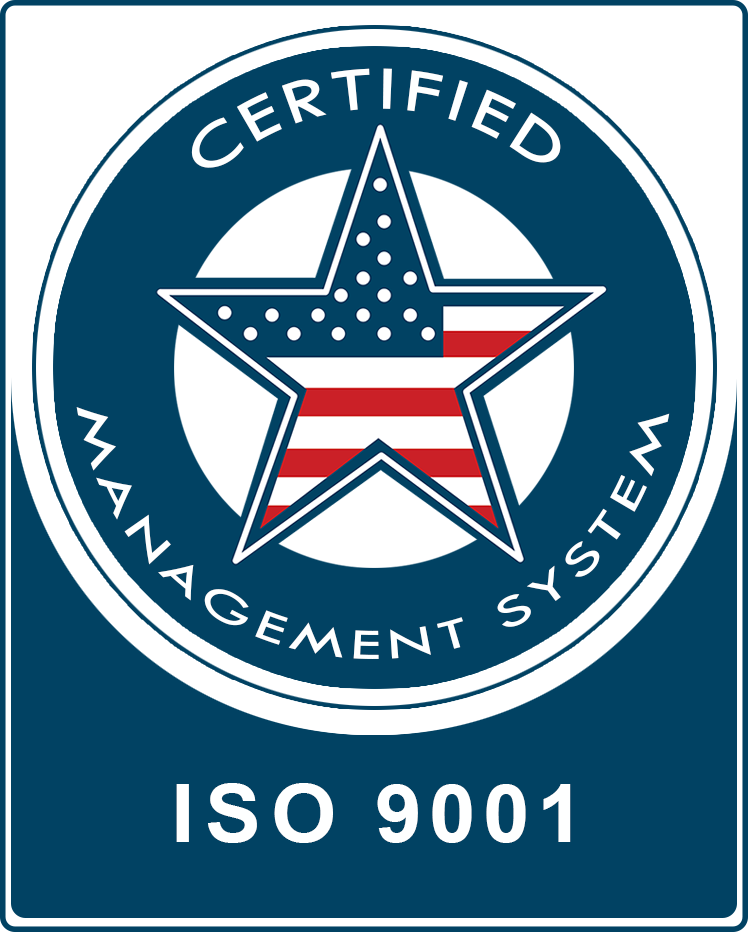ISO 9001:2015
Quality Management System
Standard Overview
ISO 9001 is defined as the international standard that specifies requirements for a quality management system (QMS). Organizations use the standard to demonstrate the ability to consistently provide products and services that meet customer and regulatory requirements. It is the most popular standard in the ISO 9000 series and the only standard in the series to which organizations can certify.
ISO 9001 was first published in 1987 by the International Organization for Standardization (ISO), an international agency composed of the national standards bodies of more than 160 countries. The current version of ISO 9001 was released in September 2015.
ISO 9001:2015 applies to any organization, regardless of size or industry. More than one million organizations from more than 160 countries have applied the ISO 9001 standard requirements to their quality management systems.
Organizations of all types and sizes find that using the ISO 9001 standard helps them:
- Organize processes.
- Improve the efficiency of processes.
- Continually improve.
All organizations that use ISO 9001 are encouraged to transition to ISO 9001:2015 as soon as possible. This includes not only organizations that are certified to ISO 9001:2008, but also any organizations involved in training or certifying others.
Certification Benefits
ISO 9001 helps organizations ensure their customers consistently receive high quality products and services, which in turn brings many benefits, including satisfied customers, management, and employees.
Because ISO 9001 specifies the requirements for an effective quality management system, organizations find that using the standard helps them:
- Customer satisfaction – To satisfy a customer’s needs, the company must first identify their market and its needs. By having insight regarding the needs of their market, companies are able to continuously deliver products and services that fulfill the needs of their market.
- Integration of internal policies and procedures– Collating all Quality Managements Systems (QMS) documents and having is certified as compliant by ISO aims to streamline the company’s processes and procedures.
- Improved company image and reputation– getting or even attempting to get ISO 9001:2015 certification is no easy feat. As mentioned earlier, having this certification puts a company in the ranks of other companies from around the world that follow the same quality standards.
- Company culture that is aimed towards continuous improvement– a company that complies with the ISO 9001:2015 have procedures that aim to improved products and services; it also aims to promote the professional development of its employees and the company culture.
- Opportunities for partnerships– because getting ISO-certified impels that they meet international standards of practice, there are certain companies that make ISO certification as a requirement to become an accredited supplier in their organization.
- Customer Focus – the goal of any business is to satisfy the customer and keep them happy. All steps in the process of improvement should be made with this goal in mind. As a business implements ISO 9001, every decision will be made with the customer and their satisfaction in mind.
- Process Approach - The premise behind emphasizing the process that is used is that a process can be controlled and repeated, while results are largely a result of the process. By focusing on a process that is proven to produce the desired results, you can increase the rate at which you achieve these results.
In Nevada, the Clark County School District used ISO 9001 to save $174 million over 10 years in actual expenditures and cost avoidance. More than 3,000 employees were trained to the standard, enabling three critical components of the system’s success: training, communication and respect, and efficiency.
Certification Requirements
The ISO 9001 standard requires your organization address seven key areas - also known as clauses - in order to achieve continual improvement within your Quality Management System:
- Context of the organization
- Leadership
- Planning
- Support
- Operation
- Performance evaluation
- Improvement
Supported by the quality management principles these requirements help your business to successfully implement an effective Quality Management System.
Context of the Organization
Clause 4 of the ISO 9001:2015 Standard is where you set out the purpose and strategic direction of your business in terms of quality. It covers the following points:
- Determining the factors, both internal and external to your business, that affect the quality of your services
- Identifying the stakeholders in your business such as staff, suppliers, and other interested parties
- Understanding your customers and their needs
Leadership
The ISO 9001 standard recognizes that an effective Quality Management System depends on the commitment of your organization’s senior management. It therefore requires, through clause 5, that your leadership team take responsibility for:
- Creating the Quality Management System
- Establishing the quality policies and objectives
- Communicating these policies and objectives to employees responsible for the quality of the company’s products and services
- Managing the annual reviews.
Planning
An effective Quality Management System is one that operates on risk-based thinking, putting in place measures to address both risks and opportunities alike. As part of clause 6 therefore, companies must:
- Document potential risks including their severity and chance of occurrence
- Plan to prevent or reduce undesired effects
- Integrate plans to enhance desirable effects
Support
The ISO 9001 standard requires, through clause 7, that your organization provides adequate resources to operate an effective Quality Management System. This includes providing resources for:
- Robust infrastructure
- Efficient working environments
- Effective HR Management
Operation
The Operation section within ISO 9001:2015, also known as clause 8, describes the work your company must do to develop and deliver goods or services to your customers.
Your processes will set out:
- The requirements and quality objectives of your products or services
- The process guides, documents and resources your employees need to create products or services successfully
- The monitoring, inspection or testing your company needs to ensure the quality of your products or services
- The rules governing the creation and storage of your records.
Performance evaluation
Clause 9 of the ISO 9001:2015 standard requires your organization to measure and analyze your processes, recording the results in order to:
- Demonstrate it conforms to the requirements of the ISO 9001 standard
- Ensure it applies all aspects of its Quality Management System
- Support continual improvement in quality management across the organization.
Improvement
The final clause in the ISO 9001:2015 standard stresses the importance of continual improvement within a business.
Measures should be put in place to:
- Improve services and products for the betterment of the business
- Better match customer needs and therefore improve customer satisfaction
- Identify instances of processes not achieving their goals and update them accordingly



